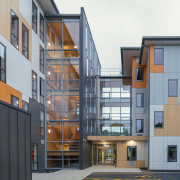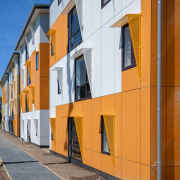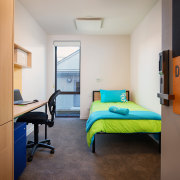Otago student building incorporates sustainable design and provides a variety of accommodation options
Boasting sustainable, cross-laminated timber (CLT) construction and other strong green credentials, this on-campus, contemporary, polytechnic student village brings new meaning to mindful design

Everything about the new Te Pa Tauira – OtagoPolytechnic Student Village reflects smart, modern building practices and respect for the planet. The facility is developed on a brownfield site, uses advanced sustainable materials and was designed and built following the guiding principles of the most stringent of green architecture rating tools.
Designed by Mason & Wales Architects, project managed by Logic Group, and with Naylor Love the main contractor, the contemporary 231-bed student accommodation comprises two wings. The west wing has five levels of single and single ensuite bedrooms, while the four-storey east wing has a mixture of studios and four-bedroom apartments. Woven between these accommodation options are light-filled community spaces.
The student building was constructed with stone pile foundations, a concrete slab ground floor and external walls timber-framed and clad with a weathertight XPressclad system, together with Swiss Pearl coloured fibre cement and Gib.
And key to many aspects of this building, the floors and internal walls were constructed using innovative and environment friendly pre-fabricated cross laminated timber panels (CLT). The product is extremely strong and light – about one fifth the weight of concrete – and also 100% sustainable.
Ian McKie, director, Naylor Love Dunedin, says the pre-fabrication of the CLT elements meant the facility was built significantly faster than if it was in conventional concrete or steel.
“The CLT sections were prefabricated in Nelson by XLam and assembled like a giant jigsaw in Dunedin, with minimal propping required,” McKie says. “In addition, the CLT sections required very little drilling or cutting on site, making for a tidy, quiet worksite.”
The choice of CLT brought some architectural firsts for the accommodation building as well. This was the first time laminated timber was used to create a multi-level building in Dunedin and it is also the largest laminated wood building, by volume, and the tallest of its kind in the country.
“A major Otago Polytechnic driver for the project was to complete the facility following the principles of the Living Building Challenge (LBC), and the CLT structure ticked the sustainability box without adding extra costs.”
LBC is an international sustainable building certification program that promotes advanced measurement of sustainability in the built environment, rigorously measuring actual building performance. CLT went a long way towards meeting the LBC materials requirement, with the pre-fabricated panels using Forest Stewardship Council certified timber, and the manufacturing process being extremely low waste.
Naylor Love joined the design team under an Early Contractor Involvement model and, as the Main Contractor, the company was also responsible for full on-site delivery.
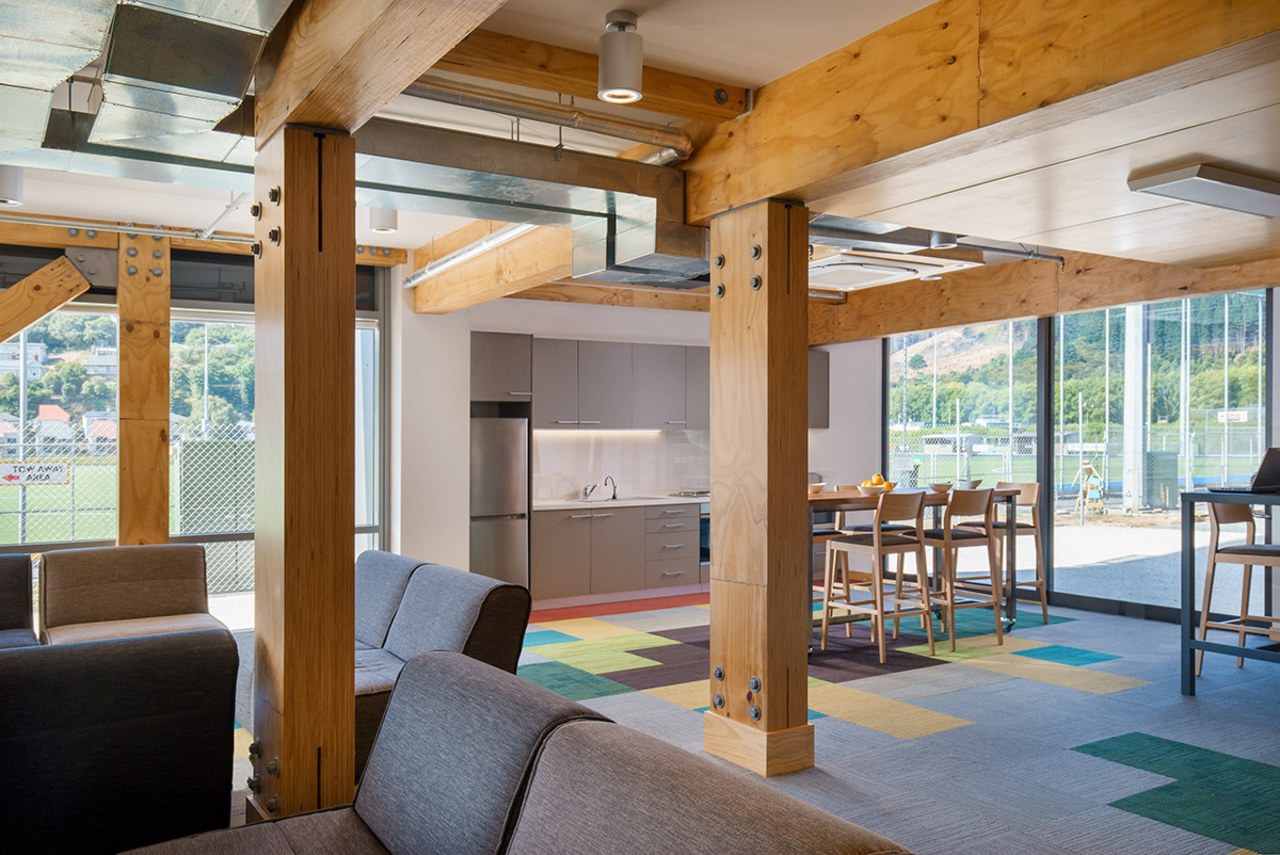
“We relished the opportunity to work collaboratively with the Otago Polytechnic, the design team, and the supplier to deliver this ground-breaking accommodation building,” says McKie. “Essentially, this is a building we will be proud of for many years to come.
“Naylor Love’s role was broad and included identifying and resolving potential issues with fire and acoustic ratings. In addition, the fast-moving project required meticulous planning by our site team to manage materials and labour – we were building full floors in a matter of days.”
Construction took fifteen months to complete – a particularly tight programme to ensure the facility was available for the Otago Polytechnic’s domestic and international 2018 student intake.
Tracey Howell, capital works and facilities manager at Otago Polytechnic, says at times there were upwards of 105 contractors on site and that Naylor Love closely co-ordinated all works, at the same time creating a great team culture which has helped deliver a unique project.
“Otago Polytechnic is very happy with the final product – it’s great to have students in the building.”
For further details, contact Naylor Love Dunedin, Auckland, Waikato/Bay of Plenty, Wellington, Canterbury and Central Otago, email: enquiries@naylorlove.co.nz, web: www.naylorlove.co.nz
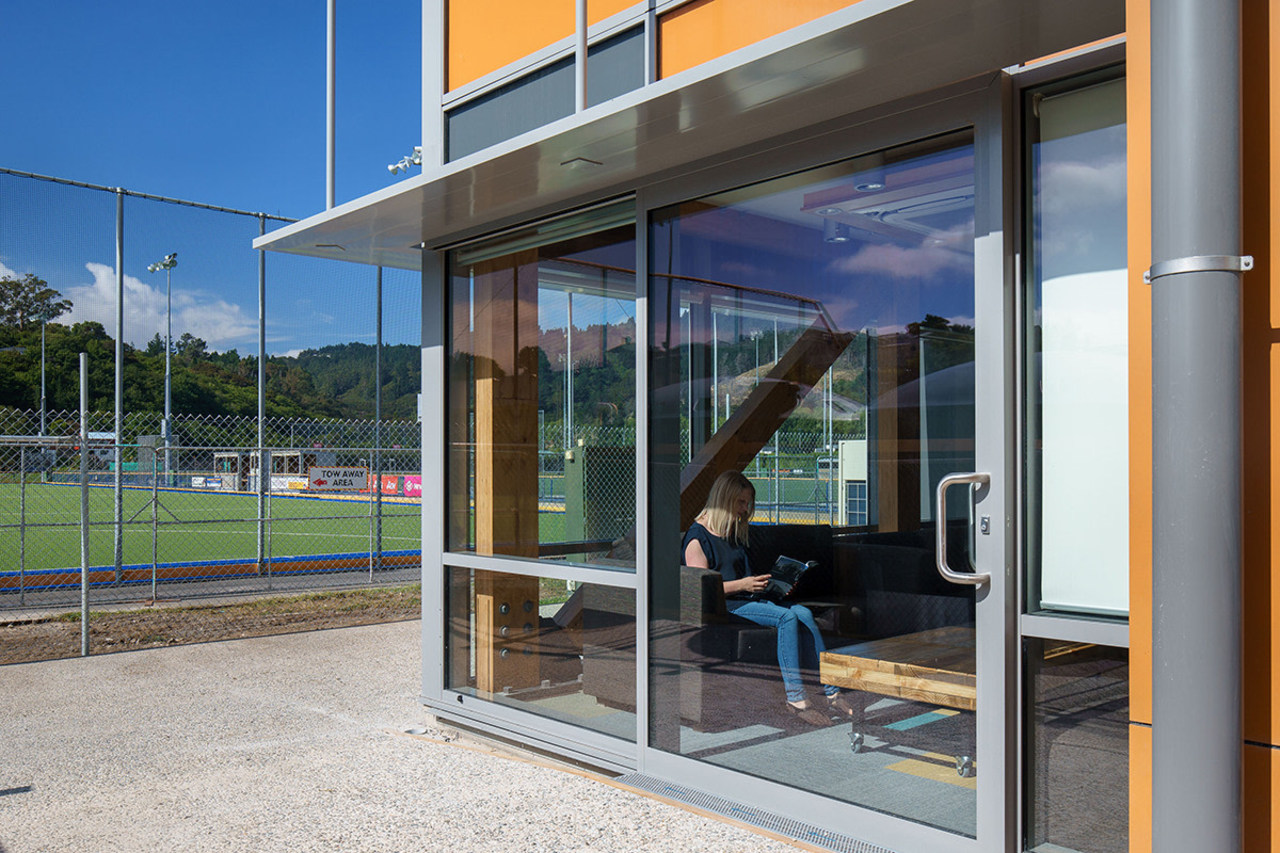
Story by: Trendsideas
Home kitchen bathroom commercial design
Diving into nature
Classic looks, contemporary efficiency
Personality plus
Commercial Design Trends Vol. 34/1C
Flexibility has become the keyword in the workplace – both as a business process and in the physical design of our work ...
Read More






